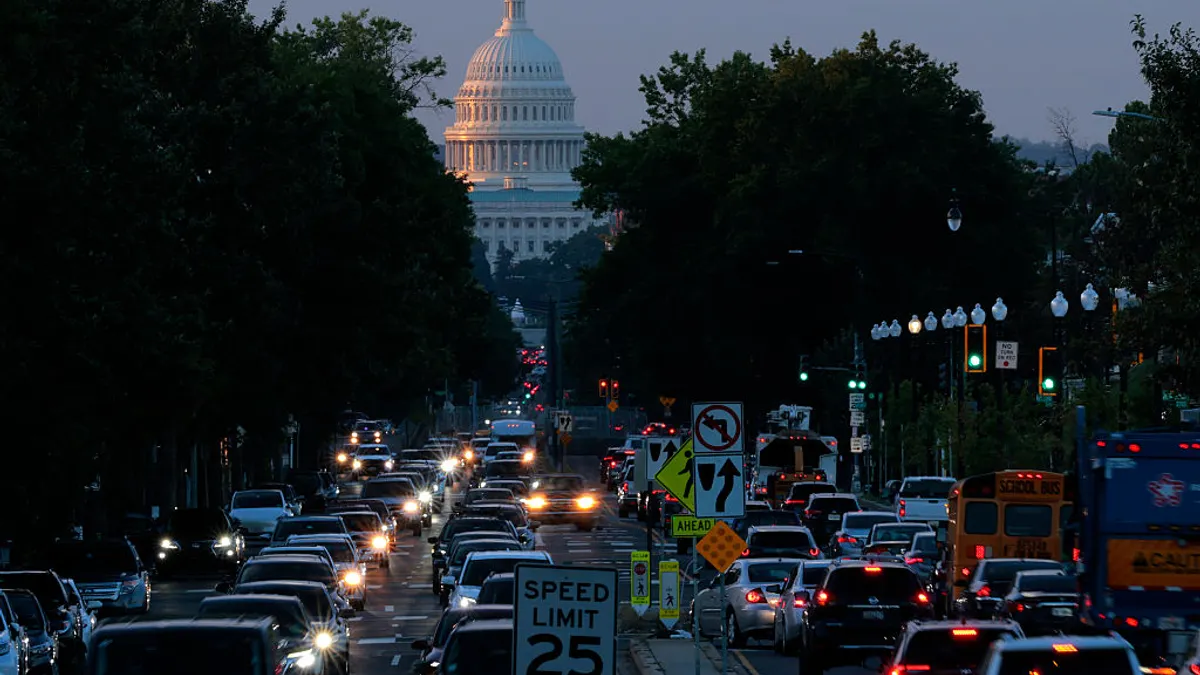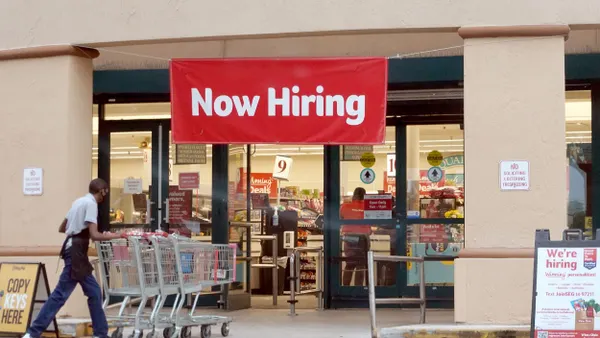American commuters lost the equivalent of nearly eight full workdays to traffic congestion last year, a record high signaling that U.S. travel patterns have shifted significantly thanks in part to flexible work, researchers at the Texas A&M Transportation Institute said in an Oct. 22 press release.
The institution’s 2025 Urban Mobility Report found that auto traffic resulted in an average of 63 hours lost per driver, as well as a 16% increase in national congestion costs over the previous five years, topping $269 billion per year.
Several factors contributed to the findings, including the increased adoption of hybrid work schedules, David Schrank, senior research scientist at the institute and lead author of the report, said in the press release. Researchers noted that hybrid work likely drove traffic to shift to typically “off-peak” times and days such as midday, midweek and during weekends, even as it eased pressure during usual peak traffic periods.
The findings coincide with other reports that employers wound back flexible work. HR Dive’s 2025 Identity of HR Survey found that fewer than half of surveyed organizations offered remote or hybrid work arrangements as part of their talent acquisition strategies last year, down from 56% in 2023.
Sources who previously spoke to HR Dive viewed the economy’s larger return-to-office push as a potentially shortsighted move premised on employer convenience and the relative weakness of the talent market compared to that which characterized the immediate post-pandemic era. The trend also sparked concerns of a “hybrid hierarchy” wherein some organizations extend greater flexibility to in-demand talent but not to the majority of staff.
Traffic is another consideration: a 2023 Executive Networks report found that 46% of global knowledge workers believed their employers had not made returning to offices worth the time to commute to them. Meanwhile, one analysis found that adopting remote work instead of commuting by car could collectively save U.S. workers up to $183 million per day.
Car commutes present a financial and time barrier to RTO plans, experts previously told HR Dive, but investment in benefits and programs that incentivize employees to use other transportation modes could ease the transition. Modes such as biking, walking and public transit also may have positive effects on employee health and well-being compared to car travel. More than one-third of HR professionals surveyed last year by transit benefit vendor Jawnt said that offering commuter benefits helped encourage RTO.
The Texas A&M Transportation Institute report identified a number of potential solutions stakeholders could adopt to reduce time spent in traffic but emphasized that no one approach would solve the problem.
“Anyone who says there is a single solution that can solve congestion, be supported, and be implemented everywhere (or even in most locations) is exaggerating the effect of their idea,” researchers wrote.
Employers, for instance, could develop plans that allow workers to avoid traditional rush hours or increase flexible work options, where possible. Local governments, meanwhile, can make more efficient use of monitoring technologies, improve road emergency response and diversify development patterns, among other actions.














